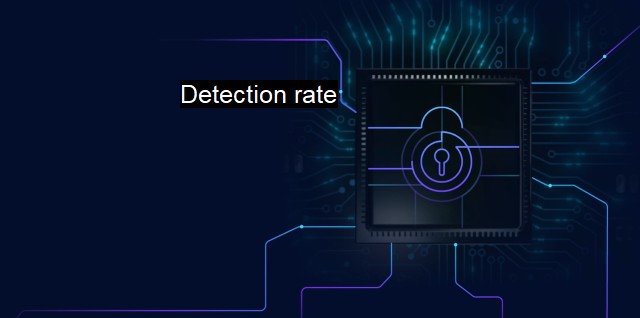What is Detection rate?
The Importance of Detection Rate: Ensuring Effective Cybersecurity Solutions for Malware Prevention
In cybersecurity and antivirus terminology, detection rate refers to the ability of security software to successfully identify and mitigate threats. The aim is to obtain the highest detection rate possible, which implies that a larger proportion of potential cyber threats can be eliminated. Given the severity of damage a single successful cyber threat could cause, high detection rates are necessary to ensure a stronger level of protection for systems.Fundamentally, the detection rate provides insights into the effectiveness of an antivirus program in discovering malware and other potential vulnerabilities. When protective security programs scan a system for potential threats, the detection rate is a measure of how many of the detected issues are actual problems, as opposed to false positives (instances where the antivirus flags non-threatening elements as threats).
Three basic types of detection methods contribute to the detection rate of antivirus software--signature-based, heuristic-based, and behavior-based detection. These are the primary methods by which we measure the effectiveness of antivirus software.
Signature-based detection is focused on virus definitions or 'signatures'. This means that the antivirus software has a dictionary of known threats, and it scans the system to match data with these signatures. A threat detected using such a method is highly likely to be a genuine virus, malware, or cyber threat.
Heuristic-based detection identifies threats by looking for suspicious patterns or anomalies. It works particularly well against unknown vulnerabilities or zero-day exploits, as it doesn't need to refer to the known virus definition; instead, it works by identifying traits and behaviors that are common to malicious scripts.
Behavior-based detection, as the name suggests, observes the ongoing behavior of applications and system processes. Unlike signatures and heuristics, this detection method scans for abnormalities in system behavior to proactively detect potential threats based techniques. This can include tracking memory utilizations, system modifications or any other weird behavior that might indicate the presence of a threat.
The combination of multiple detection methods boosts the overall detection rate of antivirus programs. it is essential to optimize these systems so as not to overwhelm users with false positives that can lead to "alert fatigue." When users start to disregard alerts due to frequent false positives, the risk of missing a real threat is high.
Different cyber security providers often cite their detection rates as proof of their service effectiveness. these figures can sometimes be misleading and may not indicate the comprehensive creative ways hackers use to breach security networks. Examples of notorious threats that often go undetected include advanced persistent threats and polymorphic viruses that can alter their signatures to avoid discovery.
The detection rate is an essential metric for evaluating the ability of an antivirus program to identify and neutralize threats in a timely manner. Still, they should not be seen as the ultimate test. A high detection rate is indeed an indication of the potential power of an antivirus program, yet other performance metrics should also be taken into account for a holistic perspective. For instance, how the antivirus program handles neutralized threats, whether it removes them or quarantines them, can also be factored in when evaluating the tool's effectiveness.
To sum it up, a higher detection rate represents the greater efficiency of an antivirus program in identifying malware. it is essential to balance this with a low rate of false positives and checks in place for advanced cyber threats that can bypass traditional detection methods. A comprehensive understanding and effective utilization of the detection rate can enhance cybersecurity protection levels and subsequently influence and bolster an organization’s cybersecurity stance.

Detection rate FAQs
What is detection rate in cybersecurity?
Detection rate refers to the ability of an antivirus software to identify and block malicious files or programs. It is expressed as a percentage of the total malware samples identified by the antivirus program.How important is detection rate in antivirus software?
Detection rate is very important in antivirus software as it determines the software's ability to protect a device or system from malware attacks. The higher the detection rate, the more effective the antivirus software is in detecting and blocking malware.Can an antivirus have a 100% detection rate?
No, it is practically impossible for any antivirus software to achieve a 100% detection rate. This is because new malware is constantly being developed, and it may take some time for antivirus software to identify and block them. However, a high detection rate can still provide excellent protection against malware.How can I choose an antivirus software with a high detection rate?
Before choosing an antivirus software, it is essential to read reviews and check the detection rate of the software. You can also look for independent tests or evaluations to compare detection rates between different antivirus software. Keep in mind that a high detection rate is not the only factor to consider when choosing antivirus software, as other features like ease of use and customer support can also be important.| | A | | | B | | | C | | | D | | | E | | | F | | | G | | | H | | | I | | | J | | | K | | | L | | | M | |
| | N | | | O | | | P | | | Q | | | R | | | S | | | T | | | U | | | V | | | W | | | X | | | Y | | | Z | |
| | 1 | | | 2 | | | 3 | | | 4 | | | 7 | | | 8 | | |||||||